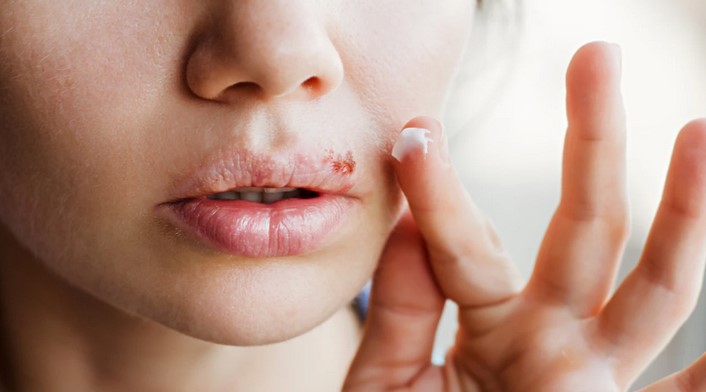
Introduction
Cold sores, medically known as herpes labialis, are a common viral infection caused by the herpes simplex virus (HSV). Characterized by painful, fluid-filled blisters around the lips or mouth, cold sores can be both physically uncomfortable and emotionally distressing. Fortunately, a variety of cold sore remedies are available to help alleviate symptoms and expedite the healing process. In this article, we delve into the science behind these remedies and gain a deeper understanding of how they work to promote the body’s natural healing mechanisms.
The Herpes Simplex Virus and Cold Sore Formation
To comprehend the healing process of cold sores, it’s essential to first understand the virus responsible for their occurrence. The herpes simplex virus, specifically HSV-1, is the primary culprit. This virus is highly contagious and can be easily transmitted through close contact, including kissing, sharing utensils, or even touching infected surfaces.
Once the virus enters the body, it typically remains dormant in nerve cells until triggered by factors such as stress, illness, or sun exposure. When reactivated, HSV-1 migrates along nerve fibers to the skin’s surface, resulting in the formation of cold sores.
The Healing Process of Cold Sores
The healing process of cold sores is a multi-stage journey that involves various biological mechanisms working in tandem. Understanding these stages can provide insights into how different remedies target specific aspects of the healing process.
1. Prodrome Stage:
The prodrome stage is the initial phase of a cold sore outbreak. During this period, individuals may experience tingling, itching, or burning sensations around the affected area. This stage occurs due to the virus replicating and moving towards the skin’s surface.
2. Vesicle Stage:
As the virus continues to replicate, fluid-filled blisters, or vesicles, begin to form. These blisters are a result of the immune system’s response to the viral infection. The vesicles are highly contagious and contain a high concentration of active virus particles.
3. Ulcer Stage:
Within a few days, the vesicles burst, releasing the virus-laden fluid and leading to the formation of painful ulcers. At this stage, the immune system mounts a more robust defense, releasing immune cells to combat the viral infection.
4. Crust Stage:
As the ulcers gradually heal, a scab or crust forms over the affected area. This crust acts as a protective barrier, shielding the healing tissue underneath.
5. Healing Stage:
During the healing stage, new skin cells develop underneath the scab, gradually replacing the damaged tissue. This phase can take up to several weeks, depending on the individual’s immune response and the severity of the outbreak.
Cold Sore Remedies and Their Mechanisms
A range of over-the-counter and prescription remedies are available to help manage cold sore symptoms and expedite the healing process. These remedies target various stages of the healing process and aim to provide relief and promote faster recovery.
1. Antiviral Creams:
Antiviral creams containing compounds like acyclovir, famciclovir, or penciclovir are designed to inhibit the replication of the herpes simplex virus. These creams are most effective when applied during the prodrome stage, as they can help prevent the virus from spreading and reduce the severity of the outbreak.
2. Pain Relievers:
Over-the-counter pain relievers such as ibuprofen or acetaminophen can help alleviate the discomfort associated with cold sores. These medications target the inflammatory response triggered by the immune system as it combats the viral infection.
3. Topical Ointments:
Ointments containing ingredients like docosanol or benzocaine provide a protective barrier over the cold sore, preventing further irritation and promoting healing. These ointments can also reduce the risk of secondary bacterial infections.
4. Lip Balms with Sunscreen:
Exposure to sunlight and UV radiation can trigger cold sore outbreaks in some individuals. Lip balms that contain sunscreen help protect the lips from UV rays and can potentially reduce the frequency of outbreaks triggered by sun exposure.
5. Dietary Supplements:
Certain dietary supplements, such as lysine, an essential amino acid, have been suggested to help manage cold sore outbreaks. Lysine may interfere with the virus’s ability to replicate and has been studied for its potential in reducing the duration and severity of cold sores.
6. Natural Remedies:
Various natural remedies, including tea tree oil, lemon balm, and aloe vera, have been explored for their potential antiviral and healing properties. While research is ongoing, these remedies may provide additional relief for some individuals.
Conclusion
Cold sores can be both physically uncomfortable and emotionally distressing, but understanding the science behind their formation and the healing process can empower individuals to effectively manage and expedite their recovery. Cold sore remedies target different stages of the healing process, from inhibiting viral replication to alleviating pain and promoting the growth of new skin cells. By choosing the right combination of remedies and adopting a holistic approach to managing outbreaks, individuals can minimize the impact of cold sores on their lives and enjoy improved comfort and confidence. As research continues, new insights into the intricacies of the herpes simplex virus and its interactions with the human body may pave the way for even more effective and targeted cold sore remedies in the future.